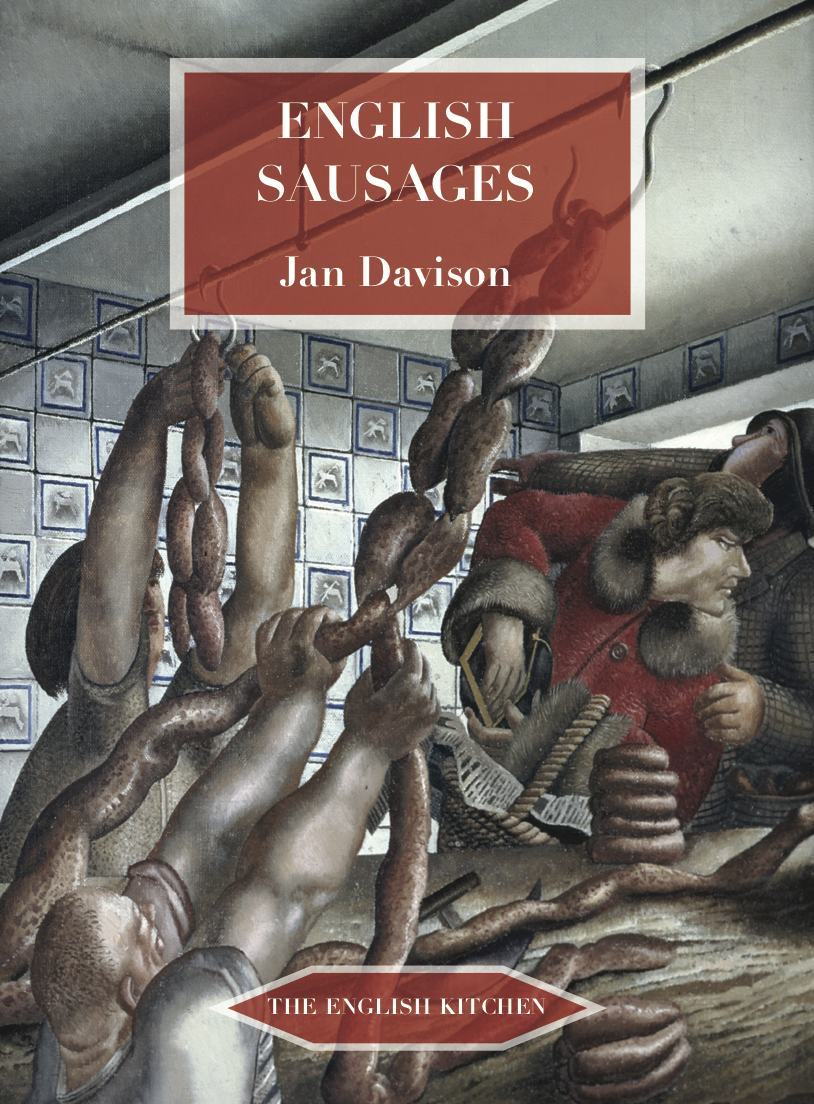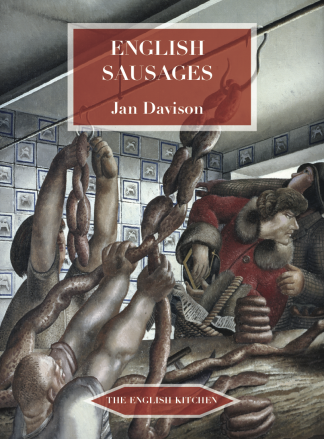Description
Jan Davison
English Sausages
The English Kitchen series from Prospect Books gives the reader lots of recipes and helpful hints but also offers that extra ingredient to a cookbook: knowledge and context. As very little of this has ever been dished up when it comes to English food, the series is therefore important. This book tells the history of English sausages from the Roman conquest to the present day. The story that unfolds is illuminating. Despite their current humble status, we discover that sausages have a distinguished pedigree and were once an exclusive food, favoured by kings, queens and their courts. Their culinary heritage is rich and varied: black puddings prepared with the blood of porpoise, opulently spiced sausages from the medieval court, embellished with pine nuts and saffron, and others flavoured with barberries, almonds and figs, served with a claret sauce. Over 100 sausage recipes, from antiquity to those made today, are brought together for the first time, with chapters covering: the sausages of Roman England; English fresh sausages; regional sausages; white puddings and hogs puddings; black puddings; and smoked and keeping sausages. The narrative that weaves through the recipes chronicles the culinary trends, regional customs and social changes that have shaped the English sausage – herbed, spiced, smoked, stuffed and skinless – and reveals how the sausage has earned a special place in England’s culinary culture. English Sausages is a culinary history and cookery book combined – a book to be read as much as it is to cook from.
Review in the Times Literary Supplement, 27th May 2016 Article – Dining with the Tudors Diane Purkiss Review for English Sausages Those seeking stronger meat will enjoy Jan Davison’s meticulous and entertaining study of the English sausage. It contains a series of elegant historical essays, and a number of helpful recipes. While exploring what she terms the “less savoury” aspects of the sausage, by which she means additives rather than decaying meat, she rightly disputes the old idea that sausage makers used spices in meat products to disguise tainted meat… … Davison has a good scholarly eye for fakelore, of which there is ample in the food history tradition, and she is good with method; the glossary alone is worth the price of the book.”


